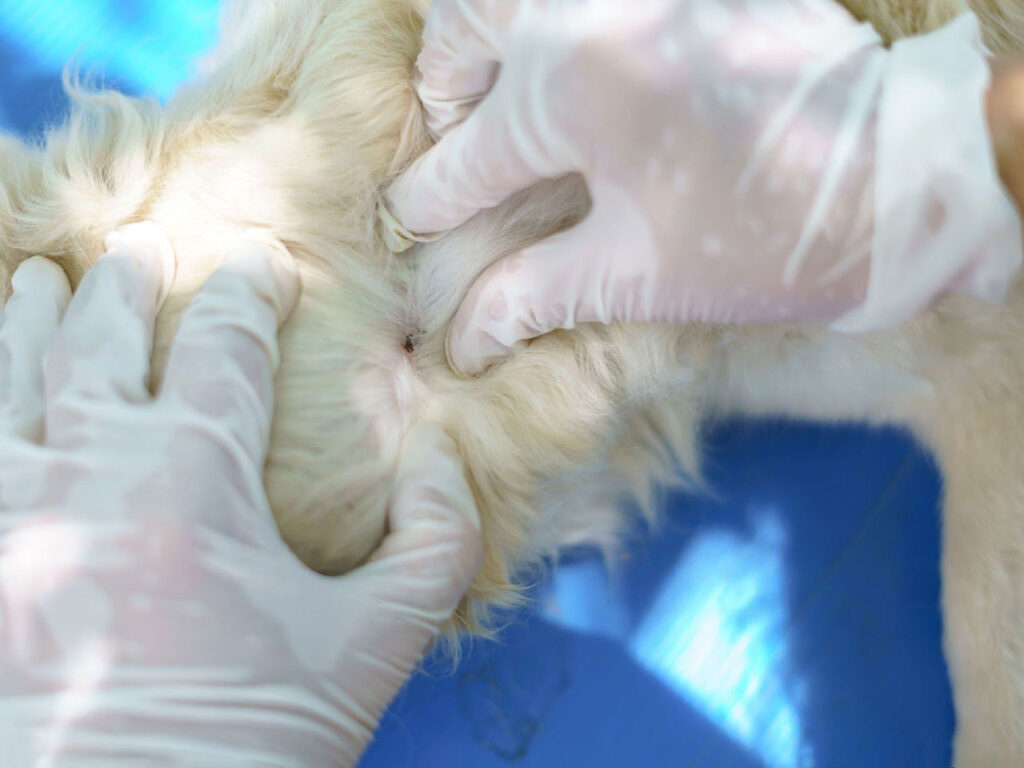Wondering how to easily remove ticks from dogs? Understanding the proper procedure for handling and removing ticks is essential to ensure their safe removal without spreading infectious material.
For those residing in tick-prone regions or areas with pathogen-carrying organisms, regular tick checks are advised. Additionally, after your dog ventures into woods or bushes, it’s recommended to thoroughly inspect for ticks. Detecting and promptly removing ticks is crucial. These parasites can transmit infections within hours of latching and biting.

Tick Removing Tips
- Removing ticks with your bare fingers is not advisable because you may not be able to remove them properly and also, the ticks may get squished, which may further spread pathogens.
- If you do want to remove it with your fingers, use tissues or napkins at least so that you don’t get tick fluids on your fingers. Wash your hands afterwards with soap or disinfectant.
- Tweezers are the best tools that help in effective removal of the ticks. Use a pair with thin, fine tips so that the tick can be pulled out without tearing it.
- Clear the fur away from the area where tick is located and grasp it using the tweezers close to the dog’s skin. Then pull it upwards slowly and gently. Keep adding steady pressure, so that the tick lets go of the dog.
- Sometimes the mouth of the tick can break and remain on the skin when you pull it. You should not try to remove this part, as it can spread infection. The mouth parts dry out and fall off later.
- There are also special tools available for removing ticks such as Tick Twister or Tick Key that enable you to remove them easily.
- After removing, clean the skin surface of the dog with rubbing alcohol and clean the tools as well.
- Better way of getting rid of the tick is to kill it by wrapping it in some weight and submerging in water. If you put it elsewhere, it can crawl away.
- Sometimes, you know where to look for ticks, if you notice your dog is biting or scratching at the same place repeatedly.
Conclusion
Learning how to easily remove ticks from dogs is crucial to protect your pet. Understanding the right steps for handling and safely getting rid of ticks helps prevent the spread of harmful substances.




